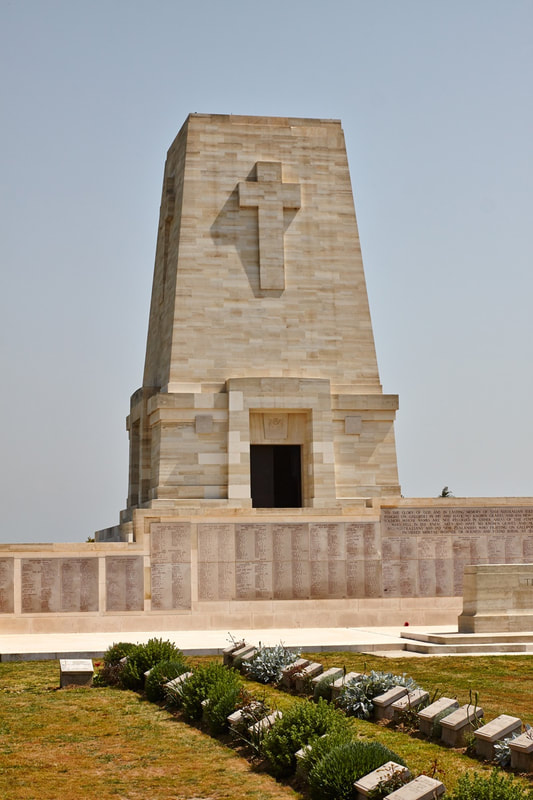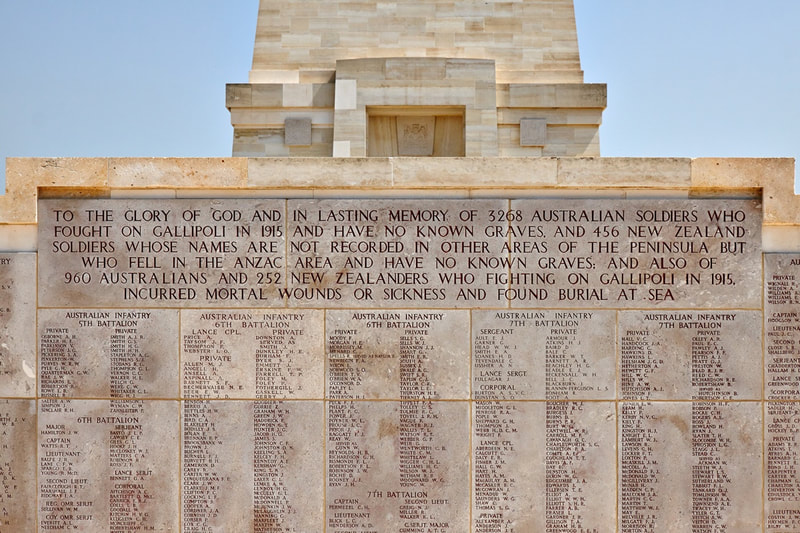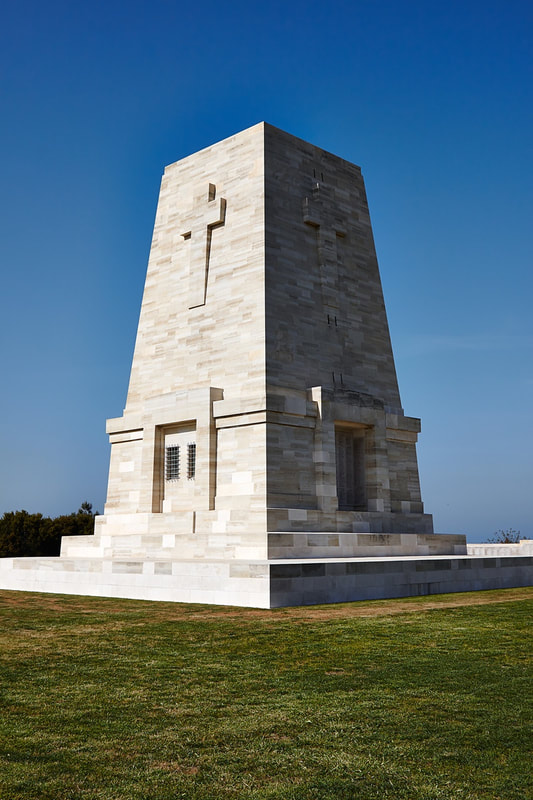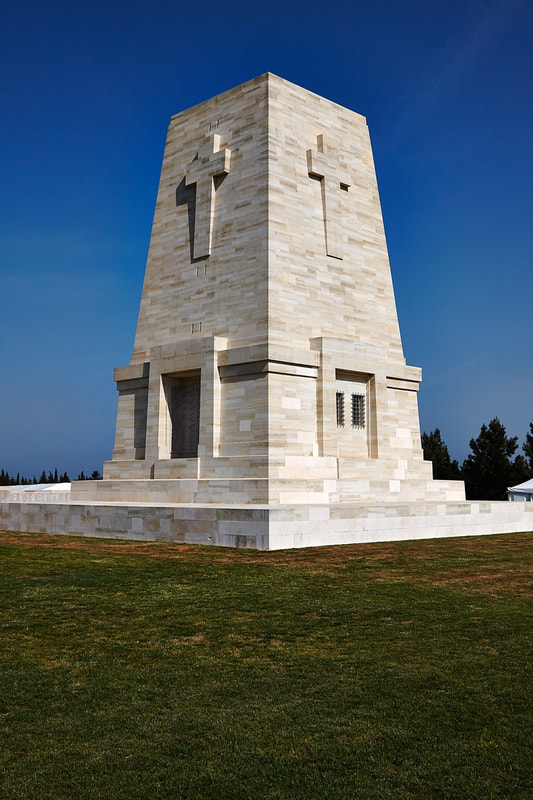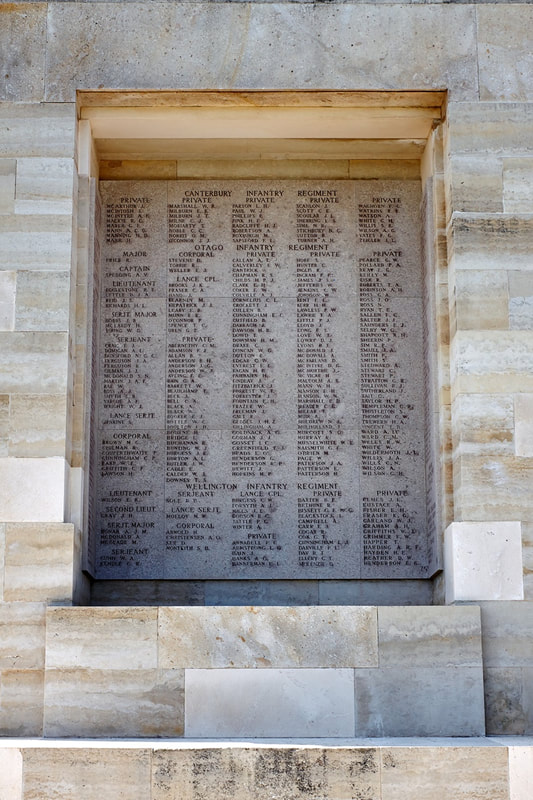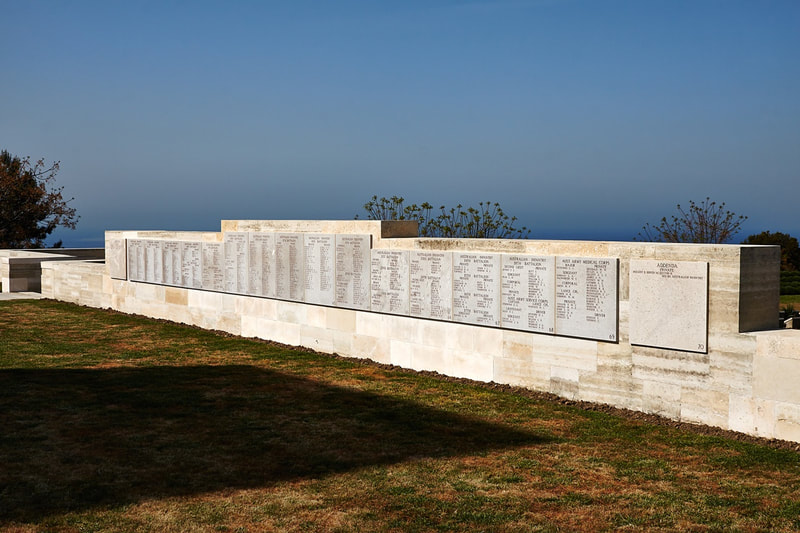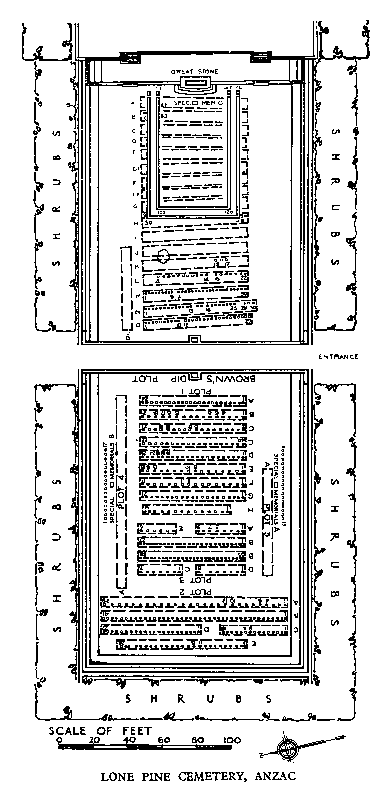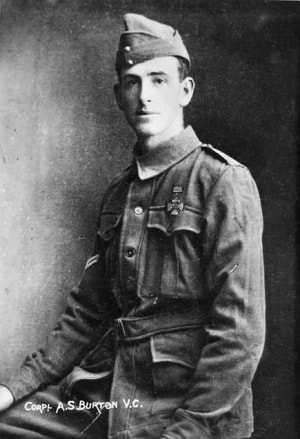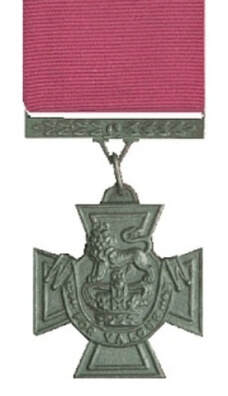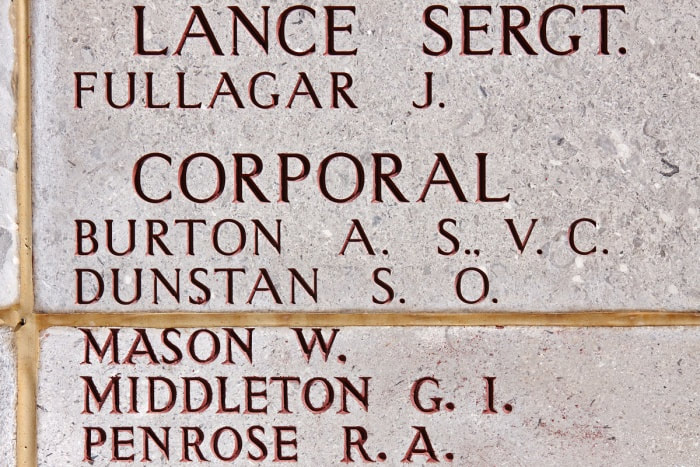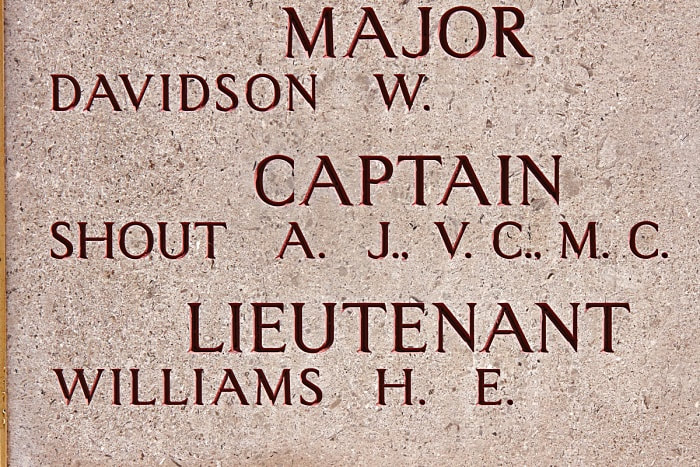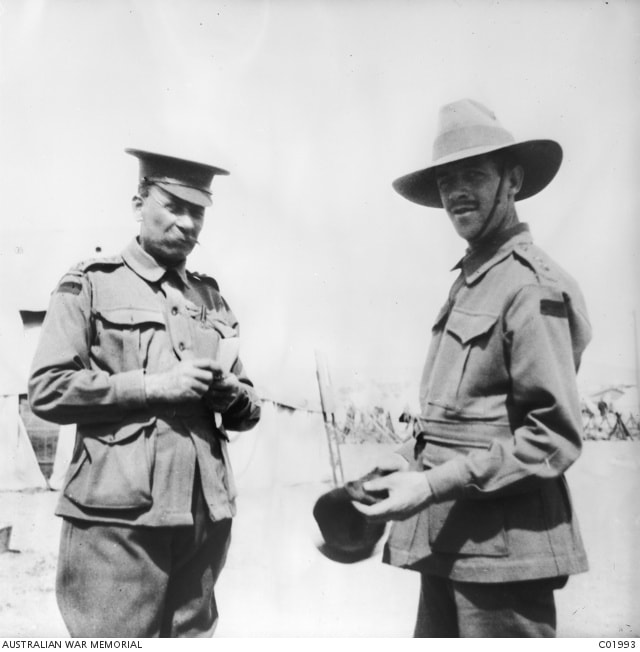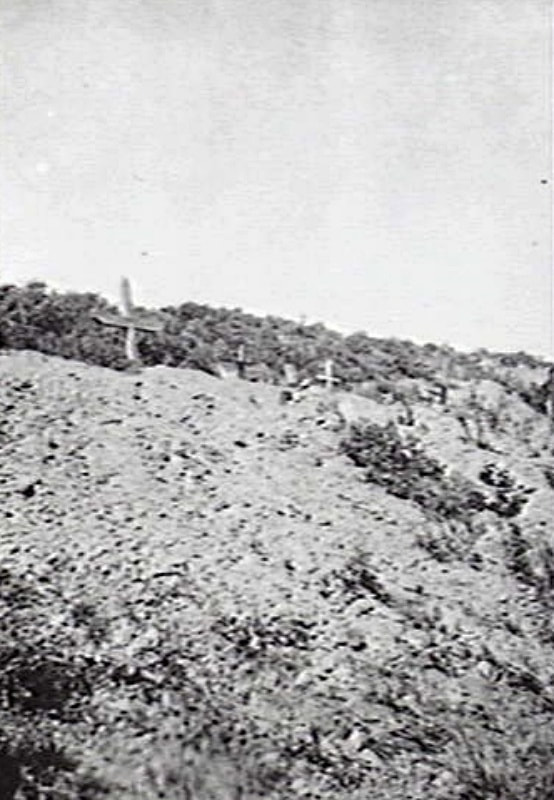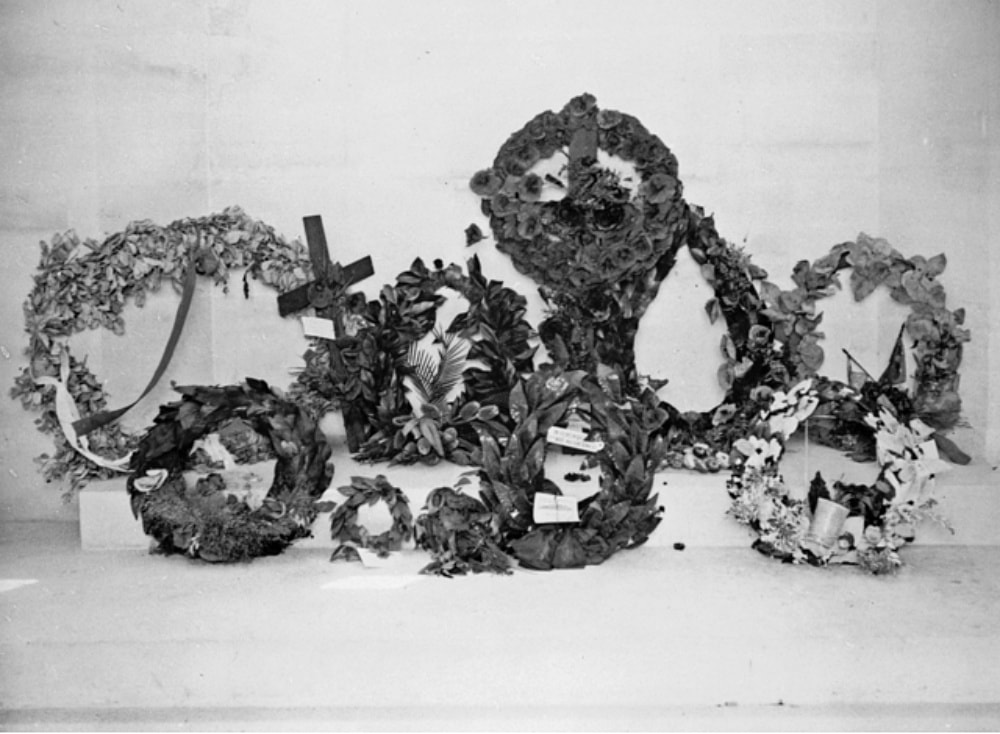LONE PINE MEMORIAL, ANZAC
Gallipoli
Turkey
GPS Coordinates: Latitude: 40.23036, Longitude: 26.28794
Roll of Honour
Listed by Surname
Location Information
The Lone Pine Memorial is at the east end of Lone Pine Cemetery.
The Anzac and Suvla cemeteries are first signposted from the left hand junction of the Eceabat - Bigali road. From this junction you should travel into the main Anzac area.
At 7.6kms., take a right turn to Chunuk Bair and initially take the road to Kemalyeri. At 10.3kms, Lone Pine will be found on the left. Lone Pine Cemetery stand on the plateau at the top of Victoria Gully.
Visiting Information
The Cemetery is permanently open and may be visited at any time. Wheelchair access to the cemetery is possible via the main entrance.
Historical Information
The eight month campaign in Gallipoli was fought by Commonwealth and French forces in an attempt to force Turkey out of the war, to relieve the deadlock of the Western Front in France and Belgium, and to open a supply route to Russia through the Dardanelles and the Black Sea.
The Allies landed on the peninsula on 25-26 April 1915; the 29th Division at Cape Helles in the south and the Australian and New Zealand Corps north of Gaba Tepe on the west coast, an area soon known as Anzac. On 6 August, further landings were made at Suvla, just north of Anzac, and the climax of the campaign came in early August when simultaneous assaults were launched on all three fronts.
Lone Pine was a strategically important plateau in the southern part of Anzac which was briefly in the hands of Australian forces following the landings on 25 April. It became a Turkish strong point from May to July, when it was known by them as 'Kanli Sirt' (Bloody Ridge).
The Australians pushed mines towards the plateau from the end of May to the beginning of August and on the afternoon of 6 August, after mine explosions and bombardment from land and sea, the position was stormed by the 1st Australian Brigade. By 10 August, the Turkish counter-attacks had failed and the position was consolidated. It was held by the 1st Australian Division until 12 September, and then by the 2nd, until the evacuation of the peninsula in December.
The LONE PINE MEMORIAL stands on the site of the fiercest fighting at Lone Pine and overlooks the whole front line of May 1915. It commemorates 4,932 Australian and New Zealand servicemen who died in the Anzac area - the New Zealanders prior to the fighting in August 1915 - whose graves are not known. Others named on the memorial died at sea and were buried in Gallipoli waters.
Commemorated on Memorial. Australian, 4,223, New Zealand, 709. Total 4,932.
The memorial stands in LONE PINE CEMETERY. The original small battle cemetery was enlarged after the Armistice when scattered graves were brought in from the neighbourhood, and from Brown's Dip North and South Cemeteries, which were behind the Australian trenches of April-August 1915.
There are now 1,167 Commonwealth servicemen of the First World War buried or commemorated in this cemetery. 504 of the burials are unidentified. Special memorials commemorate 183 soldiers (all but one of them Australian, most of whom died in August), who were known or believed to have been buried in Lone Pine Cemetery, or in the cemeteries at Brown's Dip.
Total Burials: 1,167.
Buried in Lone Pine Cemetery: Australia 648, United Kingdom 13, New Zealand 2. Total 663.
Unknown in Lone Pine Cemetery: Australia 3, United Kingdom 2, Unknown 499. Total 504.
Images in gallery below © Geerhard Joos
384 Corporal Alexander Stewart Burton, V. C.
7th Bn. Australian Infantry, A. I. F.
8th/9th August 1915, aged 21.
Panel 28.
Son of Alfred E. and Isabella Burton. Native of Kyneton, Victoria, Australia.
Studio portrait of 384 Corporal Alexander Stewart Burton, VC, 7th Battalion. This portrait was taken prior to embarkation as a private in August 1914 and following his posthumous award of the Victoria Cross, the medal and corporal's stripes were added to the image. Alexander Burton was one of three Australian soldiers awarded the Victoria Cross for one particular action during the fighting at Lone Pine, although his was the only posthumous award. Born in Kyneton, Victoria, in 1893, Burton was working as an ironmonger when war broke out. He joined the AIF and was posted to the 7th Battalion. Although he missed the landing on Gallipoli on 25 April 1915, he watched it from the deck of a hospital ship, where he was being treated for a throat infection. A week later he was in the trenches, fighting with the 7th Battalion in a number of different areas. In the early hours of 9 August, at Lone Pine, the Turks launched a strong counter-attack on a newly captured trench held by Burton, Lieutenant Frederick Tubb, Corporal William Dunstan, and others. The Turks advanced up a sap and blew in the sandbag barricade but Burton, Tubb, and Dunstan rebuilt it. The enemy twice more destroyed the barricade but each time was driven off and the barricade rebuilt. Burton was killed by a bomb while he was building up the parapet. He has no known grave, but his name is commemorated on the Lone Pine Memorial, Gallipoli, and by an oak tree and bridge at Euroa, Victoria.
Citation:
An extract from "The London Gazette," No. 29328, dated 15th Oct., 1915, records the following:-"For most conspicuous bravery at Lone Pine trenches in the Gallipoli Peninsula on the 9th Aug., 1915. In the early morning the enemy made a determined counter-attack on the centre of the newly captured trench held by Lieutenant Tubb, Corporals Burton and Dunstan, and a few men. They advanced up a sap and blew in a sandbag barricade, leaving only one foot of it standing, but Lieutenant Tubb, with the two corporals, repulsed the enemy and rebuilt the barricade. Supported by strong bombing parties, the enemy twice again succeeded in blowing in the barricade, but on each occasion they were repulsed and the barricade rebuilt, although Lieutenant Tubb was wounded in the head and arm, and Corporal Burton was killed by a bomb while most gallantly building up the parapet under a hail of bombs."
Captain Alfred John Shout, V. C., M. C.
1st Bn. Australian Infantry, A. I. F.
11th August 1915, aged 33.
Panel 12.
Born in New Zealand
Studio portrait of Captain Alfred J Shout. Shout served in the Boer War with the New Zealand contingent and later served in the AIF with the 1st Battalion at Gallipoli. He was awarded the Military Cross (MC) and Victoria Cross (VC) for actions at Gallipoli. Shout received the MC for gallantry in leading a bayonet charge in operations near Gaba Tepe on 27 April 1915. He was later awarded the VC for bravery in actions at Sasse's Sap, Lone Pine, where Shout charged the trench found to be occupied by Turks. After killing eight Turks and capturing sections of the trench, Shout threw a bomb which exploded in his hand, fatally wounding him. Shout died on the hospital ship on 11 August 1915.
Citation:
An extract from "The London Gazette," No. 29328, dated 15th Oct., 1915, records the following:-"For most conspicuous bravery at Lone Pine trenches, in the Gallipoli Peninsula. On the morning of the 9th Aug., 1915, with a very small party, Capt. Shout charged down trenches strongly occupied by the enemy, and personally threw four bombs among them, killing eight and routing the remainder. In the afternoon of the same day, from the position gained in the morning, he captured a further length of trench under similar conditions, and continued personally to bomb the enemy at close range under very heavy fire until he was severely wounded, losing his right hand and left eye. This most gallant officer has since succumbed to his injuries."
Informal group portrait of three 1st Battalion officers at their camp outside Cairo. Identified left to right: Captain Albert George McGuire, who later died of wounds in Egypt on 7 May 1915, age 23; Major Blair Inskip Swannell, who was killed during the landing at Anzac Cove on 25 April 1915; Lieutenant Alfred John Shout (later Captain, MC and VC), who died at sea on 11 August 1915 of wounds sustained at Lone Pine on 9 August.
Major Blair Inskip Swannell, (Middle) 1st Bn. Australian Infantry, A. I. F. died 25th April 1915, aged 39. Special Memorial 10. Son of Mrs. Swannell, of Castilian Terrace, Northampton, England.INSCRIPTION. THEIR GLORY SHALL NOT BE BLOTTED OUT. Buried in Baby 700 Cemetery, Gallipoli in Turkey
Captain George Francis McGuire (Left) is buried in Kantara War Memorial Cemetery in Egypt and Lieutenant Alfred Shout (Right) is commemorated on the Lone Pine Memorial, Gallipoli in Turkey.
Informal group portrait of three 1st Battalion officers at their camp outside Cairo. Identified left to right: Captain Albert George McGuire, who later died of wounds in Egypt on 7 May 1915, age 23; Major Blair Inskip Swannell, who was killed during the landing at Anzac Cove on 25 April 1915; Lieutenant Alfred John Shout (later Captain, MC and VC), who died at sea on 11 August 1915 of wounds sustained at Lone Pine on 9 August.
Major Blair Inskip Swannell, (Middle) 1st Bn. Australian Infantry, A. I. F. died 25th April 1915, aged 39. Special Memorial 10. Son of Mrs. Swannell, of Castilian Terrace, Northampton, England.INSCRIPTION. THEIR GLORY SHALL NOT BE BLOTTED OUT. Buried in Baby 700 Cemetery, Gallipoli in Turkey
Captain George Francis McGuire (Left) is buried in Kantara War Memorial Cemetery in Egypt and Lieutenant Alfred Shout (Right) is commemorated on the Lone Pine Memorial, Gallipoli in Turkey.
Informal portrait of two officers of the 1st Battalion; Major (Maj) William Davidson (left) of Oakley, NSW and Lieutenant (Lt) William Sydney Duchesne of Summer Hill, NSW. Both men embarked from Sydney on HMAT Afric on 18 October 1914. Maj Davidson, a professional soldier and a native of Nairn Scotland, died on board HMHS Guildford on 21 August 1915, aged 48, from wounds received in action at Gallipoli. He was buried at sea and is commemorated on the Lone Pine Memorial. Lt Duchesne, a military student prior to enlistment, was killed in action at Gallipoli sometime between the 25 and 28 April 1915, aged 20 and is buried in the Baby 700 Cemetery, Anzac.


